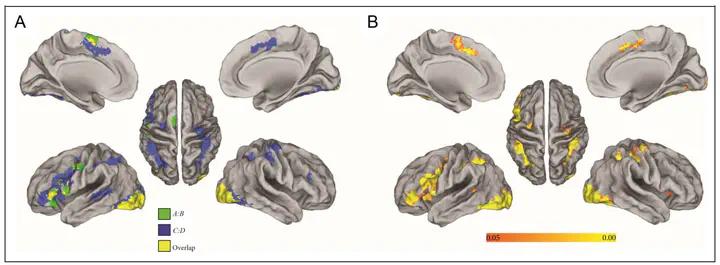Distributed Code for Semantic Relations Predicts Neural Similarity during Analogical Reasoning
 Image credit: Journal of Cognitive Neuroscience
Image credit: Journal of Cognitive Neuroscience
Abstract
The ability to generate and process semantic relations is central to many aspects of human cognition. Theorists have long debated whether such relations are coarsely coded as links in a semantic network or finely coded as distributed patterns over some core set of abstract relations. The form and content of the conceptual and neural representations of semantic relations are yet to be empirically established. Using sequential presentation of verbal analogies, we compared neural activities in making analogy judgments with predictions derived from alternative computational models of relational dissimilarity to adjudicate among rival accounts of how semantic relations are coded and compared in the brain. We found that a frontoparietal network encodes the three relation types included in the design. A computational model based on semantic relations coded as distributed representations over a pool of abstract relations predicted neural activities for individual relations within the left superior parietal cortex and for second-order comparisons of relations within a broader left-lateralized network.
Supplementary notes can be added here, including code, math, and images.